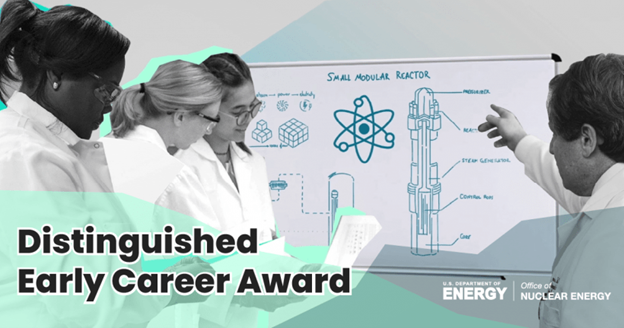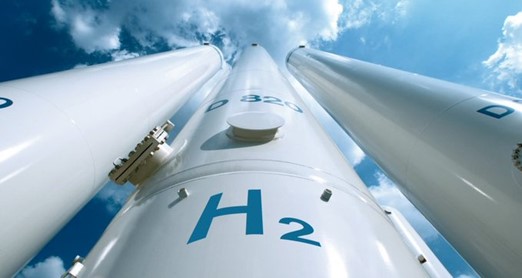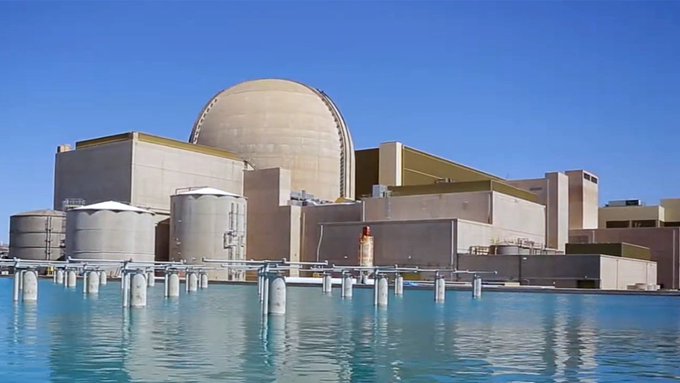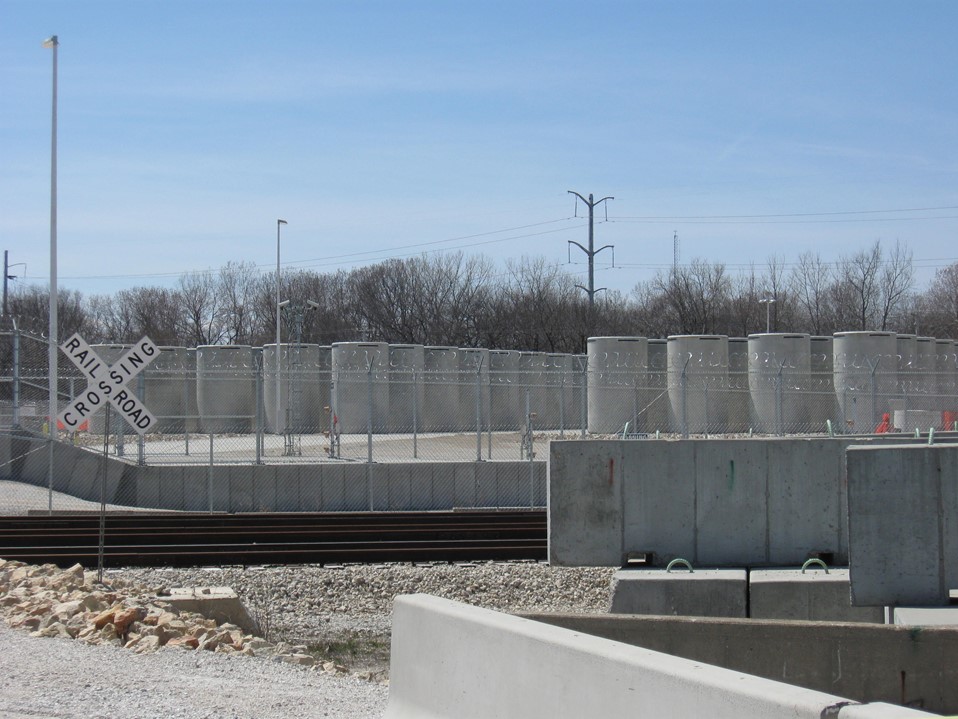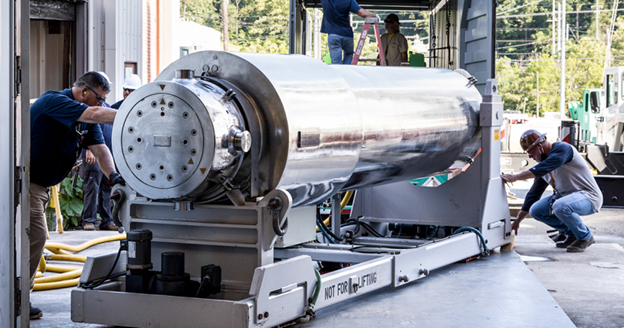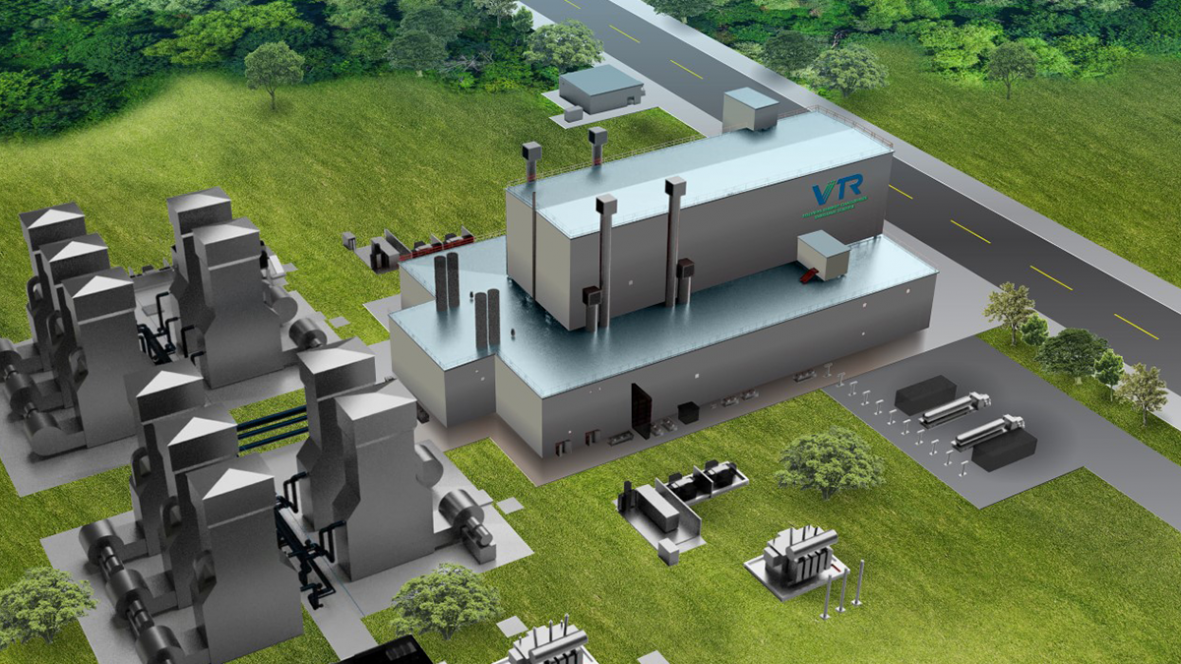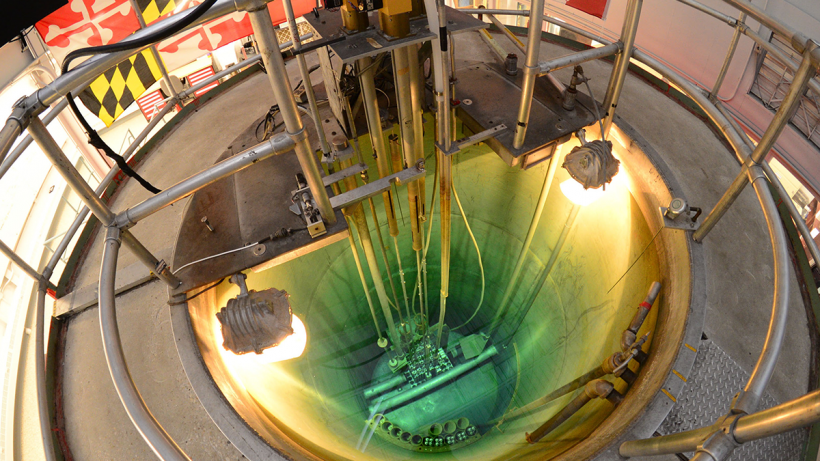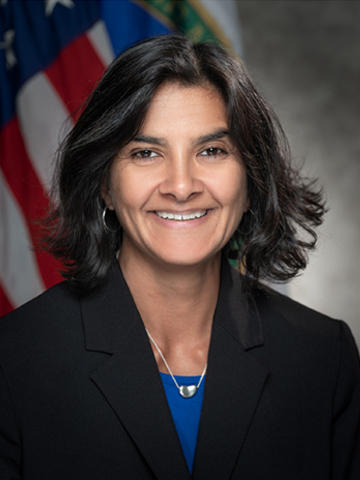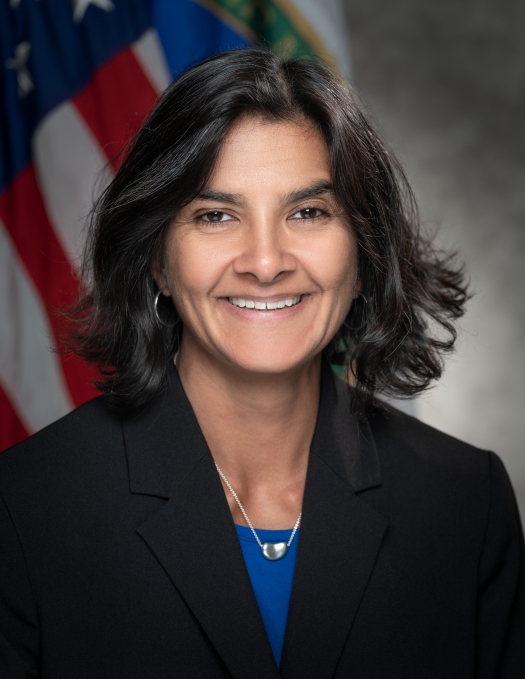Spent nuclear fuel in dry storage at the decommissioned Zion nuclear power plant in Illinois.
Congress needs to take action to break the impasse over a permanent solution for commercial spent nuclear fuel, according to a report by the U.S. Government Accountability Office. The GAO recommends that Congress amend the Nuclear Waste Policy Act (NWPA) to authorize a new consent-based siting process, restructure the Nuclear Waste Fund, and direct the Department of Energy to develop and implement an integrated waste management strategy.
The GAO also recommends that the DOE finalize the consent-based process it began in 2015 for siting consolidated interim storage and permanent geologic repository facilities. The DOE agrees with that recommendation.
Irradiated lead test rods are delivered to Oak Ridge National Laboratory for examination. (Photo: ORNL)
Several lead test rods of Westinghouse’s EnCore accident tolerant fuel recently arrived at Oak Ridge National Laboratory for post-irradiation examination over the next year in support of the Nuclear Regulatory Commission’s licensing process. The rods were installed in 2019 in Exelon’s Byron-2, a 1,158-MWe pressurized water reactor, and were removed in fall 2020 and prepared for shipment to ORNL.
A rendering of the VTR facility. (Image: INL)
Kathryn Huff, the Department of Energy’s acting assistant secretary for nuclear energy, asserted in an article published online by the Office of Nuclear Energy (DOE-NE) on July 30 that demonstration reactors, such as the Natrium and Xe-100 reactors being built as full-size power producers with cost-shared funding from the DOE, and test reactors, such as the Versatile Test Reactor, are both necessary for nuclear innovation. Both are also line items in the DOE budget request, and Huff’s article sends a clear message to appropriators about the need to fund both the Advanced Reactor Demonstration Program (ARDP) and the VTR.
The Maryland University Training Reactor, one of 12 TRIGA reactors currently operating at universities in the United States. Photo: University of Maryland
TRIGA International, the only supplier of TRIGA reactor fuel in the world, recently completed a major renovation project at its fuel fabrication facility in Romans, France. The Department of Energy, which provided both technical and financial support for the project, said the upgrades ensure the continued operation of 36 TRIGA reactors around the world, including 18 in the United States.
The interior of the process building at the American Centrifuge Plant in Piketon, Ohio, where Centrus Energy plans to operate a HALEU demonstration cascade by June 2022. (Photo: Centrus Energy)
Advanced reactor cores are being designed for higher efficiencies and longer lifetimes, but to get there, they need high-assay low-enriched uranium (HALEU).
Enriched to between 5 and 19.75 percent fissile U-235, HALEU is packed with nuclear potential. It can be used as a feedstock for the demonstration of new fuel designs, from uranium alloys to ceramic pellets and liquid fuels. Those fuels can enable advanced reactor and microreactor demonstrations. Operating light-water reactors could potentially transition to HALEU uranium oxide fuels for extended operating cycles and improved plant economics.




